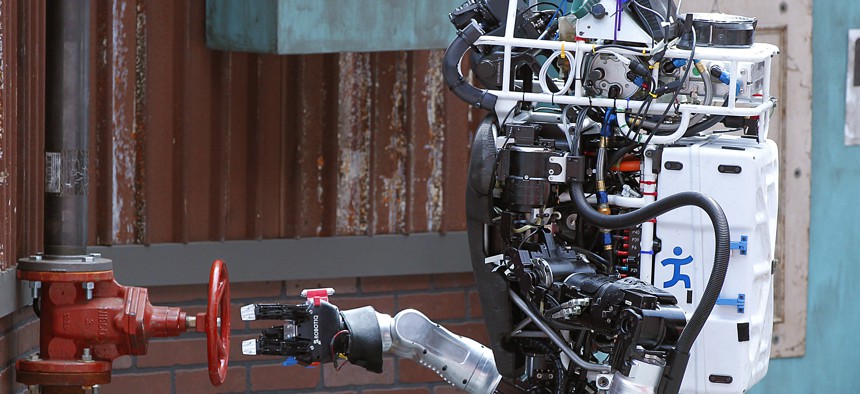DARPA Robotics Challenge: What We Learned

Robot Running Man from the Florida Institute for Human and Machine Cognition proceeds to turn a valve in the next stage of the competition during the DARPA Robotics Challenge. Alex Gallardo/AP
The cutting-edge agency takes a look back on one of its biggest challenges.
In June, the Defense Advanced Research Project Agency wrapped up its Robotics Challenge and awarded millions of dollars to the winning robotics teams from the United States and South Korea. But how did the challenge begin? DARPA takes a look back to see what it learned along the way.
The very first meeting occurred in October 2012, when DARPA introduced the idea to robotics labs around the country and provided funding to about a dozen of them. The agency decided the challenge should focus on robotics and disaster response.
"What we have done is we have shown the world a little bit, just a tiny bit, of what is possible," said Dr. Gill Pratt, program manager of DARPA's Defense Sciences Office. "And we picked a particular application of robotics that I think is very, very close to everyone's heart, which is making the world safer from disasters."
Before bringing on the hardware component, DARPA kickstarted the competition with the Virtual Robotics Challenge in June 2013. The challenge was open to any team that wanted to compete, demonstrating to the agency the numerous great ideas out there.
Later that year in December, the DRC trials took place. The team's performance in the challenge showed a need to focus on communication and autonomy.
"We know that robots are slow," Pratt said. "We know that they're somewhat unsteady on their feet. We think that they're about at the same stage of competence as a 1-year-old child in terms of their locomotion competence. But what we really want do is establish a reference point so that a year from now, we can see how far we can get."
Then, in March 2014 after the trials, DARPA visited Fukushima, Japan, with seven of the teams participating in the challenge.
"It was really important to see first hand what the problem was that we were trying to solve," Pratt said.
To see learn more and see these robotics challenge in action, check out the video below from DARPA:






